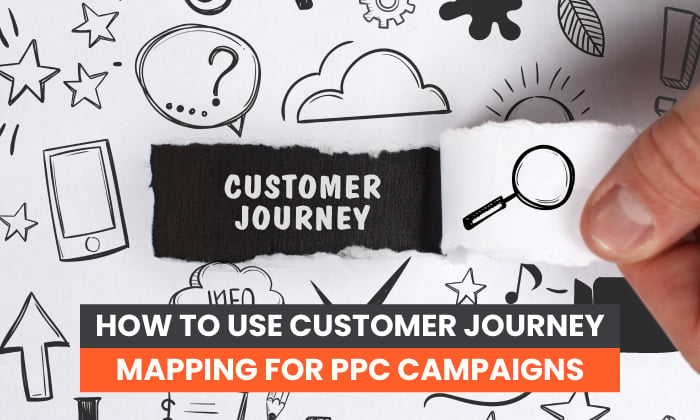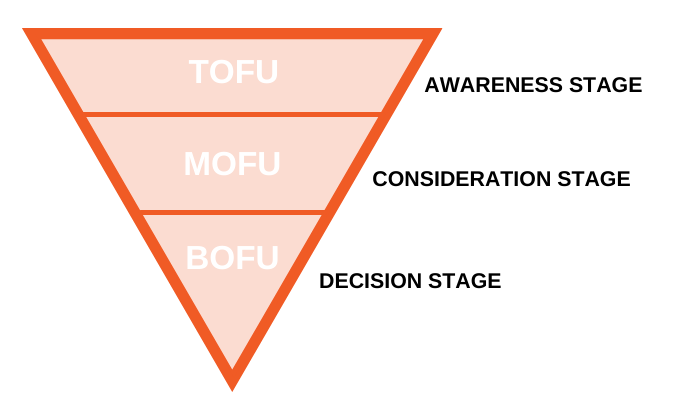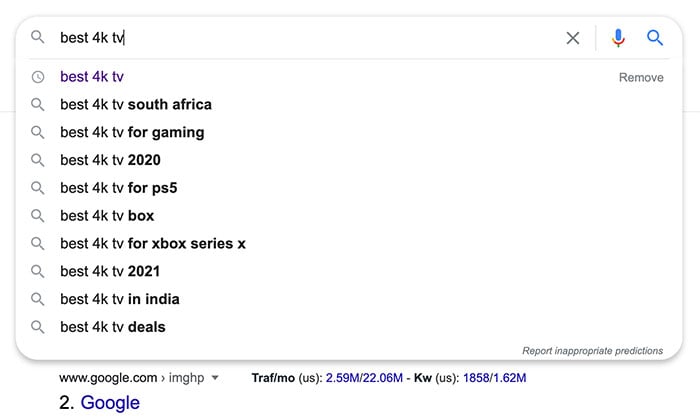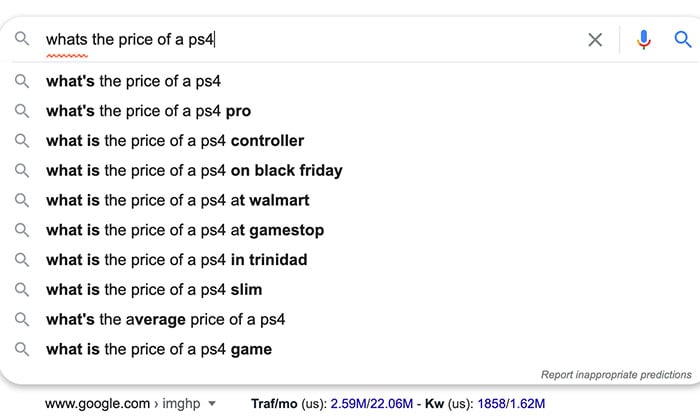How to Use Customer Journey Mapping for PPC Campaigns

People might think PPC is all about having a huge budget to play with, but I’m here to tell you that’s not entirely true.
Yes, your PPC campaigns can be expensive if you haven’t mapped out your ads to the buyer’s journey.
However, when you combine PPC with customer journey mapping, you effectively guide your potential customers through all the phases to make a sale.
It helps you tighten your funnel and prevent leaks along the way, which can translate to more sales and less money spent on ineffective PPC ads.
By the end of this post, you’ll know how to align your PPC campaigns to your customer journey map and which KPIs to look for to measure your success.
What Is Customer Journey Mapping?
A customer journey map is a visualization of every step a prospect takes to complete your business’s desired action.
With PPC campaigns, the action is sales. You want the right person to click through and convert into a paying customer. To have high conversion rates, you need to understand the entire journey a customer goes through before clicking the “Add to Cart” button.
By combining customer journey mapping with your PPC campaigns, you can identify the actions, motivations, pain points, and areas of friction for each prospect and use that to figure out what messages would make them convert.
Why You Should Create a Customer Journey Map for Your PPC Campaigns
Before we jump into why you should combine PPC campaigns and customer journey mapping, let’s take a couple of steps back.
What exactly are PPC ads, and how can they help your business? Pay-per-click (aka PPC) ads are an online advertising model. Advertisers bid on specific keywords and only pay when a user clicks through.
Here are a few of the different types of PPC ads:
- search result
- display
- social media
- video
- retargeting
Why should you use customer journey mapping for your paid ads?
Well, think of it this way: When someone hops onto Google and starts typing a phrase, they’re somewhere on the customer journey spectrum. They might be right at the beginning, where they’ve identified a problem (the awareness stage), or they could be aware of solutions to their problem and are on the hunt to make a purchase (the decision stage).
By curating PPC campaigns to a prospect’s journey, you can identify key touchpoints with your brand and the goals each person wants to achieve at every stage. With this in your arsenal, you can make sure your ads speak to the buyer’s journey holistically and encourage prospects to make a purchase.
When you take the time to go through this process, it gives you a wealth of information to create stronger PPC campaigns. You’ve created an entire ecosystem to guide the customer through the buying process and make sure they feel safe doing business with you.
To sum it up, combining your PPC ads with customer journey mapping can help you:
- Gain valuable insights: Customer journey mapping tells you what a prospect expects from you at each stage. This, in turn, helps you meet a prospect’s needs and nurture them to the final stage.
- Understand touchpoints: The buyer’s journey isn’t linear. A prospect might need multiple interactions with your brand before making a decision. By connecting these touchpoints to your PPC campaigns, you can keep them engaged, educate them to make a decision, and avoid losing the sale.
- Stronger PPC campaigns: By using all the data you have on your prospects and customers, you can predict behaviors. By anticipating what someone needs from you, you can optimize your conversion process and waste less money on PPC ads.
How to Create a Customer Journey Map for Your PPC Campaigns
It’s tough to see site visitor numbers go up and sales stay the same. However, keep in mind that what those visitors are saying isn’t a hard “no,” but rather a “not right now.”
When you use customer journey mapping with your PPC campaigns, you can learn more about what a person needs to hear from you to eventually get them to say yes. To do that, you need a marketing funnel for each part of the customer journey.

What strategies should you be applying at each stage with your PPC campaigns? Let’s break it down.
Top of Funnel (TOFU) PPC Campaigns
The top of the funnel is the stage of awareness. Your future customers are not aware of you yet, and your number one goal is to create brand awareness and educate prospects.
How do you make people aware of your brand with PPC? Here are a few ways:
- Display ads: Use display ads to give away free value. You want to give potential customers quick wins with blog posts, whitepapers, or e-books. For your targeting methods, use keyword contextual targeting. It matches keyword-targeted ads to sites within the Google Display Network. You can also use topic targeting to make sure your ad appears on relevant websites, apps, and videos.
- YouTube ads: Having over 2 billion users, YouTube is one of the best places to grow your brand awareness. Here’s how to grow your business using YouTube ads with a complete breakdown of the different ad formats and their success rates.
- Social media ads: Depending on where your audience hangs out, ads on Facebook, Instagram, or Pinterest can help with brand awareness. Facebook offers the most robust targeting, allowing you to reach people interested in specific topics or accounts similar to people already engaging with your brand.
- Google Ads: Someone in the awareness stage won’t use branded keywords. Instead, they’ll use broad words and phrases related to their problem. For example, “which TV is best” or “hiking backpack.” Using different keywords at each stage of the sales funnel can help optimize your PPC campaigns.
The key performance for your PPC campaign in the awareness stage is brand recognition. You’re not going to convert a visitor into a customer yet. This campaign is an investment to move the user down the funnel and eventually close the sale.
You want to focus on metrics like:
- bounce rate
- time spent on site
- reach
- impressions
- CPM (cost per 1,000 impressions)
Middle of Funnel (MOFU) PPC Campaigns
Once someone enters the middle of the funnel, the person is interested in making a purchase. These buyers are now aware of their problem and are actively looking for a solution. Your PPC ads become more specific as the search for a solution narrows.
- Google Ads: Ensure you’re creating PPC ads for people actively searching for your product or service. For example, if a customer is looking to buy a TV, their searches will contain more qualifying terms such as “plasma TV,” “4k TV,” or “best 4k TV for gaming.”

- Remarketing: Remarketing is a powerful component of PPC marketing. You can use it to serve ads to blog readers, users who have spent X amount of time on your site, or people who have downloaded your TV comparison guide.
- YouTube: YouTube has a video ad sequence campaign you can use to generate awareness around your business. You can set it up as a campaign subtype under “product and brand consideration” goals in Google Ads. It allows you to create a custom sequence or use a sequence template.
The key performance metric for your PPC campaign in the consideration stage is to get people to understand your product and want to buy it. To do this, give them all the information to make an informed decision and move them to the next stage.
You want to focus on metrics like:
- clicks
- CPC (cost per click)
- views
- new user conversions
- new user conversion rate
Bottom of Funnel (BOFU) PPC Campaigns
BOFU is the decision phase of the customer journey. Your prospect has identified a problem, done the research, and is ready to make an informed purchase. At this stage, your PPC traffic is hot. Users know who you are and are prepared to convert. Your PPC ads will start to get more niche and revolve around high-intent keywords.
Consider the following strategies for BOFU:
- Target your brand name: If the customer is searching for your name, congrats! All your hard work in TOFU and MOFU has paid off. They’re aware of your brand and what you offer. The search phrases you want to target are specific and include your brand name like “buy LG 4k TV.”
- Focus on high-intent search ads: In the BOFU stage, make sure your PPC ad keywords are targeting high-intent search terms like “buy,” “what’s the price of,” competitor names, and location-specific terms.

- Utilize remarketing: Set up PPC remarketing campaigns for customers who have viewed a product or abandoned their cart. You can also offer a deal to lure them back to your site and complete the purchase.
The key performance metric for your PPC campaign in the decision stage is conversions. This is when people are ready to buy, and you should focus on revenue metrics like sales and return on ad spend (ROAS).
Tips for Integrating Your Customer Journey Mapping Into Your PPC Campaigns
Now that you know all about customer journey mapping and how to use it in your PPC campaigns, here are some things to keep in mind:
- Spend time crafting your buyer personas: The more you understand your customers, the better you can map their journey and tweak your PPC campaigns.
- Write better ad copy: Do something that will grab their attention and stop the user mid-scroll. You want to make them feel like you’re reading their minds and ultimately push them deeper into your funnel.
- Dedicate time to keyword research: Using the right keywords is the difference between a successful PPC campaign and a flop. You want to make sure you’ve mapped out your keywords to the different phases, and you’re encouraging the user to make a purchase.
- Build your remarketing lists: Don’t put off fine-tuning your remarketing. When you combine this essential part of PPC with customer journey mapping, it’s integral to make sure you’re guiding the user down your funnel. You can create remarketing audiences with Google Analytics and use them for your ads.
- Test, analyze, and tweak: You can only find leaks in your funnel and fix them by constantly testing and monitoring your results. Tweak your ad messaging, look at your conversion path analytics, and adjust your strategy until you have a winning formula for your PPC campaigns.
Conclusion
To sum it up, combining your PPC campaigns and the buyer’s journey is all about serving the right message to the right person at the right time.
You want to make sure you’re providing the correct content and information whether someone enters your funnel at the top, middle, or bottom.
Once you’ve created this flow in your PPC campaigns, you’ll see more flow in your business, as well as predictability, results, and less money wasted on a leaky funnel.
What’s your biggest struggle when it comes to mapping out your PPC campaigns with your customer journey?
The post How to Use Customer Journey Mapping for PPC Campaigns appeared first on Neil Patel.
from Neil Patel https://ift.tt/392rD67
No comments